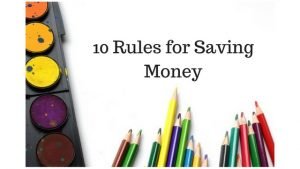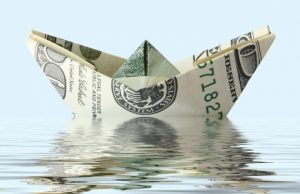 In master any area of our life, it is important to have certain rules of guidelines to help us navigate and be successful, saving money is no different. Many of us may be saving money, but without guidelines on how to do it well. Over the years, I have developed little reminders, or rules if you like, to ensure I am always saving money and growing my net worth.
In master any area of our life, it is important to have certain rules of guidelines to help us navigate and be successful, saving money is no different. Many of us may be saving money, but without guidelines on how to do it well. Over the years, I have developed little reminders, or rules if you like, to ensure I am always saving money and growing my net worth.
Although there are many more rules than the one’s outlined, I found these 10 rules to be most effective and simplistic for me.
-
Table of Contents
Pay Yourself First. Always.
You have probably heard this statement so many times when talking about personal finance. This is because this is the single most important habit that every saver needs to have in order to be successful with money long-term.
Never let any source of income come in and out of your household without taking some of that money and setting it aside for the future. In essence, you are ‘paying your future self first’. Why is this important, well, there will come a time when you can no longer work, or may no longer want to work and you will need a sizable sum of money to sustain your livelihood and get the things you want and need.
The amount saved can be small or big, but always strive to save something. This simple truth is so important but most Americans don’t follow it. More than half of Americans live paycheck to paycheck and about 30% of American don’t even have $500 set aside for emergencies (Source).
-
Strive for a savings rate, not savings amount
I emphasize the word ‘strive’ because if you don’t enjoy saving money, setting a saving rate from the start can be difficult.
A saving rate is the percentage you have decided to set aside and save from all sources of income. The most common rates used is 10%-15% of income and more ambitious savers can go as high as 30%-50%. A savings amount is just that, a dollar amount set aside each month towards long-term savings/investing. For example, deciding to save $200/month would be setting a savings amount.
It’s easy to see why people that find it difficult to save should start with a savings amount first, then once they have built their ‘savings muscles’ transition to a savings rate. A savings rate will typically take a bigger chunk out of your income (not always, but mostly) than a savings amount because it is directly proportionate to your income. However, a savings rate will always adjust to income fluctuations in your lifetime so that in times when you are making more, you save more and in times you are making less (recession, economic downturn), you save less. Either way you are always saving and over times these two differences can average out to a sizable savings nest egg.
-
Avoid lifestyle inflation
 This rule expands further on the previous rule. Lifestyle inflation occurs when our standard of living increases (the expenses we incur) as our income increases. This increase in spending and consumption is not a result of a change in circumstance i.e. more responsibility, children, marriage, but rather created to accommodate our increased income.
This rule expands further on the previous rule. Lifestyle inflation occurs when our standard of living increases (the expenses we incur) as our income increases. This increase in spending and consumption is not a result of a change in circumstance i.e. more responsibility, children, marriage, but rather created to accommodate our increased income.
Lifestyle inflation can be gradual, but its effects can be equally long lasting. Buying more house or car than we need. Eating out more, financing more items, increasing our credit card balance as we qualify for a higher limit when our income increases etc.
The easiest way to curb lifestyle inflation is to use a savings rate. As your income increases, so will your savings, leaving you free to use the balance of your money without worrying about your financial future.
-
Understand the difference between saving and investing and when to use either
Many people use the term saving and investing interchangeably, but they are different. Both require money, but how this money is used can be very different. The way I understand the difference between saving and investing is very simple. Saving money requires little risk with the principal amount of money guaranteed. Investing money requires some risk with the principal amount of money not guaranteed.
Understanding this distinction is important because it helps me know how to separate my money. For example, I keep 25% of my 6 month emergency savings fund in a basic savings account and the remaining 75% in various cashable GIC’s/CDs with varying interest rates and maturity dates. Both the CD’s and the savings account are a form of savings to me because I take on 0 risk in putting my money in there. This of course is what I want because in case of an emergency, the last thing I want to do is cash in my retirement, pay penalty taxes and lose out on long term compound interest and growth because I needed the money. For my long-term plans, I keep my money invested, taking on risk by investing in mutual funds, ETFs, stocks etc. I am willing to take this risk because my time horizon for these investments is 20 years or more.
-
Remember that purchasing power is more important than the value of your investments
Some savers get caught up in saving money, they forget to look at the flip side of long-term saving, inflation. Inflation causes the cost of goods and services to go up year after year. The average inflation rate is around 1.5%-2% a year. This is important to remember because the money sitting in your account today will be worth less next year and the year after and so on and so forth. That is of course, unless deflation occurs, but that is another story altogether.
Savers that are afraid of taking on any risk by either putting their long-term savings in financial or real property may find themselves losing out in the end. This is because the interest rate offered on basic savings account and CD’s won’t even cover the cost of inflation (2%) so every year, even though your making money by saving, their purchasing power is reduced year after year because the rate of return can’t keep up with the rising cost of goods and services.
This is why investing long-term is important. Investing allows us to keep up with the purchasing power of goods and services and gain additional growth. Those deciding not to invest will need to contribute even more money to make up the short fall.
It’s useful to be selective about your purchases too. Even though long-term investments are important to have, you should also look at material investments like cars that could be sold for a profit. These are few and far between but some cars do appreciate in value. You should look at cash for cars to know what you could get when investing in vehicles.
-
Liquidity gives you options
 In accounting, liquidity is defined as the ease in which an asset can be converted into cash. So, if we are talking about personal finance, cash would be the most liquid asset because it is already in cash. Your savings account might be next, followed by CD’s (as you would need to close them to collect your money), financial investments (stocks, bonds), real property (real estate, land).
In accounting, liquidity is defined as the ease in which an asset can be converted into cash. So, if we are talking about personal finance, cash would be the most liquid asset because it is already in cash. Your savings account might be next, followed by CD’s (as you would need to close them to collect your money), financial investments (stocks, bonds), real property (real estate, land).
Having illiquid assets like property is not a bad thing, but it is important to find balance and ensure you have a proportionate amount of liquid assets as well. Typically, people that are ‘less liquid’ will incur greater financial cost in hard financial times than people who are more liquid. This is because converting illiquid assets to the most liquid asset, cash usually costs more and more money the more illiquid the asset you are trying to convert is. For example, selling a home to free up cash will require incurring realtor fees, lawyer fees etc.
The idea is not to avoid illiquid assets, but to find a balance and ensure your net worth is not tied entirely towards illiquid assets.
-
Automate your savings
Many of us will automate our mortgage payments to ensure we are not late on these payments, but not all of us will automate our savings to ensure we are always saving for our future self. Automating your savings ensures the money is taken out before you even have time to spend it. It also ensures that you save first and then you spend, not the other way around.
If you are investing, automating your monthly/biweekly contributions also allows you to take advantage of dollar cost averaging. Allowing you to buy investments at their low and high points, averaging out the cost over time.
-
Start with the end in mind
Many people get deflated about saving money because they don’t have a reason for why they are saving. Starting with the end in mind means, giving yourself a big enough ‘why’ and making this why as clear and as vivid as possible that you feel encouraged to save.
The more you can clearly picture how you would like your life to be 10,15,30 years down the line, the easier it is to stay committed to saving money, especially if you are not naturally a saver. Figure out how much you would need to retire comfortably, then work backwards.
-
No one will care more about your money than you
No one will have more of a vested interest in your money than you will. Even people that get paid to manage your money won’t. So, although it is not required to be expert, it is important to know what you are invested in and how these investments are doing over time. So educate yourself. Learn how to buy bitcoins and what stocks do what. Take an active interest in how your money is doing. It is also important to know the fees and transaction costs incurred when investing and how this affects your overall investment growth.
-
Be patient, wealth doesn’t happen overnight
In a world where instant gratification is the norm and expected, saving money diligently over time is not sexy, but it is worth it. Wealth building for the average American takes some time, patience and careful planning. Give your investments time to grow and use the time to learn more about investing.